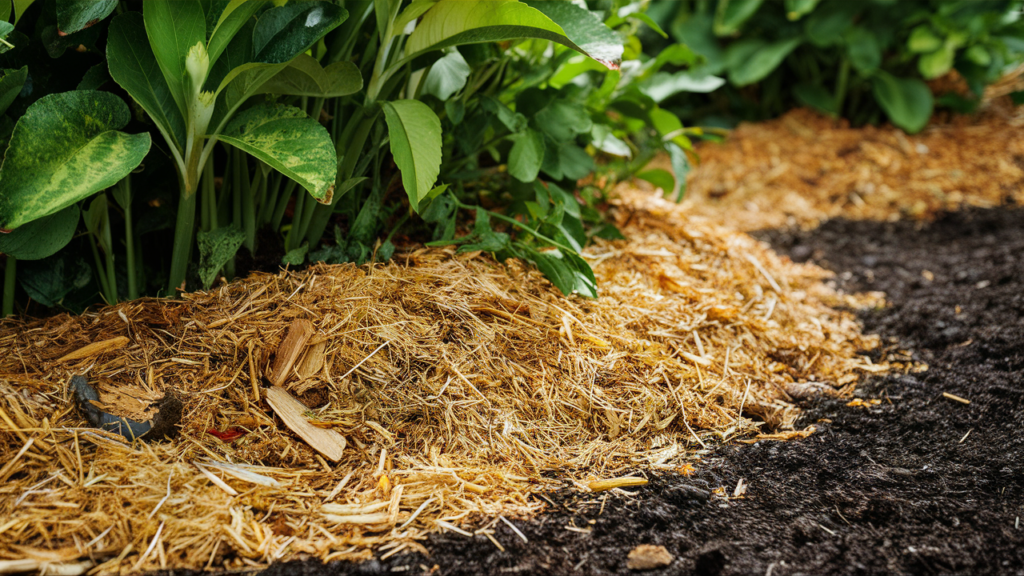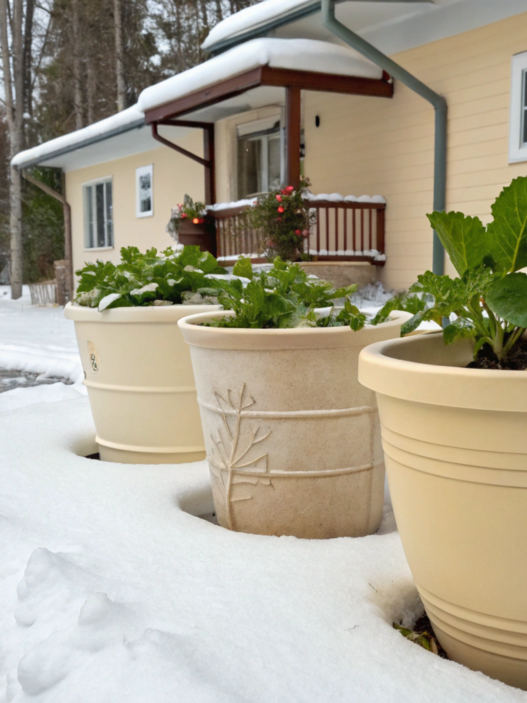If you truly love your garden, I’m sure you spend a lot of time there, caring for plants, including perennials, watching them grow year after year. But when frost comes, you’re ready, because plants need extra protection. In this article, we’ll try to figure out how to protect perennials from frost so that they bloom in full force next spring.
Why is it important to protect perennials from frost

Why are frosts dangerous for plants? Even perennials, despite their endurance, can suffer from them. Especially if these plants are not yet in a dormant period. When the air temperature drops, the water inside the plant cells freezes, expands and can damage the cell walls. Once this happens, the plants can slow down their growth in the next season, and in the worst case, not survive the winter at all.
Perennials are a good investment, both in time and money. Extra care will greatly extend their life and help keep your garden looking beautiful. Here’s how:
Step 1. Proper mulching

Mulching is one of the best ways to protect perennials from frost. A good dense layer of mulch insulates the soil, protects it and helps regulate temperature as well as moisture levels. I prefer to use organic mulch such as straw, leaves or wood chips.
Tip. The layer of mulch should be about 7-10 centimeters to effectively retain heat. According to research from the University of Massachusetts, mulching can reduce soil temperature fluctuations by up to 50%, and this is great for helping plants stay warm when unexpected frosts occur.
Why it works. Mulch acts like a blanket in this case, keeping the soil from freezing too quickly and protecting the root system of perennials from the cold.
Do you need mulch? This organic mulch is a well-recommended mulch on Amazon. It’s eco-friendly and decomposes perfectly over time.
Step 2. Cover Your Plants Before Nightfall
I once made the unfortunate mistake of waiting until morning to cover my plants. Don’t make the same mistake! Perennials need to be covered before the temperature starts to drop in the evening. Use fabrics like protective garden blankets, burlap, or even old sheets. The main thing is to protect the plants from the cold. And make sure the material breathes.
You can’t use plastic covers directly on your plants, as they can trap moisture, which will cause even more damage to the plants when it freezes. Instead, use something lightweight and don’t attach it too tightly, so the plant can “breathe” while still being protected from the cold.
Step 3. Water wisely
It may seem strange and counterintuitive, but watering perennials in cold weather can protect them from damage. This is because a well-moisturized plant is better able to withstand colder temperatures. Moist soil retains heat better than dry soil, keeping the plant’s roots warm when the temperature drops.
But be sure to follow an important rule: water your perennials early in the morning so that they have time to absorb moisture before frost arrives. And here’s a tip – don’t overdo it, because too wet soil can lead to root rot, especially in winter.
Step 4. Create a microclimate
To protect perennials from frost, it is very important to create a microclimate in the garden. I learned this rule a long time ago and it has saved me more than once. It is entirely within your power, you can always plant frost-sensitive plants near walls or structures that retain heat. By the way, even a stone or brick path can give off heat to nearby plants at night.
Research from Oregon State University shows that southern walls or fences can increase the temperature by up to 5 degrees Fahrenheit, which is enough to protect perennials from frost.
Step 5. Pruning perennials. When is the best time to do it?
I understand your impatience when you want to grab the pruning shears and tidy up your garden. I am the same way. But in this matter, it is better to hold off and wait with pruning until spring. After all, old stems and leaves on plants create natural insulation, which in turn acts as a protective barrier for the delicate internal parts of the plant.
Some perennials, such as lavender or Russian sage, benefit greatly from this natural protection. Therefore, it is better to start tidying up the garden when the threat of frost has passed. In the meantime, be patient and leave the plants alone.
Step 6. Choose frost-hardy perennials
If you, like us, live in an area with harsh winters, then you should definitely consider planting frost-hardy perennials. Such plants easily tolerate the cold and require less care. Lungwort (Pulmonaria), hellebore (Helleborus) and yarrow (Achillea) are the decoration of my garden and I love them very much. Lungwort, for example, survived harsh winters very well, and I am glad that some plants can cope with the cold on their own.
My personal experience. Winter 2020

Let’s remember 2020. It was mid-November, and the frosts came much earlier than we expected. Then we did not even have time to prepare and lost several perennials. It was very painful to see the consequences this spring. That same year, I realized how important it is to be proactive and not reactive. By the way, this concerns not only protecting perennials from frost, but also many other life situations.
Now we begin preparing for the winter period, as soon as the temperature begins to drop. As they say, it is better to be on the safe side.
Products to help protect your perennials from frosts
There you go, if you’re ready to start protecting your perennials, here are a few things I recommend:
- Frost Protection Blankets. These protective covers are perfect for protect perennials from frost when the cold weather arrives.
- Mulch. As mentioned earlier, this organic mulch is great for retaining heat in the roots.
- Protective bed covers. Garden covers protect against frost and wind while still letting sunlight through.
Be consistent for the best results
Consistency is an important factor in protect perennials from frost. Although winter is different every year, taking the time to protect your plants consistently will guarantee they will thrive when spring finally arrives. Prepare for frost early, don’t wait until it’s too late and enjoy the results next season.
Do you have tips for frost protection?
Leave a comment, share your experience or ask questions if you don’t know where to start.












